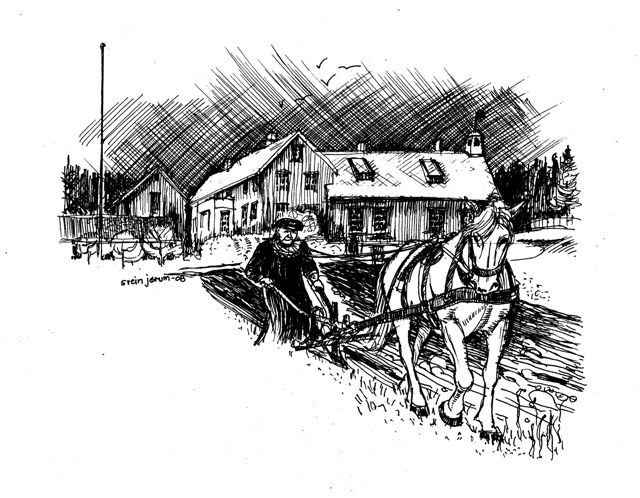This farm was first alluded to as early as 1490, when referred to as Rørwiik. Much indicates that the farm was divided, the other part being referred to as Sindisåker (Sør-Røvika). The section down to the sea is also referred to as “HAVET”. There are several possible interpretations of the name: Røvik or Rydvik probably comes from clearing land. Orally speaking, “Revika” is used locally, which may mean “sanctuary”. But that it is a cove is quite obvious.
Anders is the first tenant mentioned – in 1520. Otherwise, many officials have lived on the farm through time – such as a Bailiff, a District Judge, and Military Commanders. Common to several of these was that they owned the farm jointly with various institutions. In 1868, the state bought the farm as Chaplain farm for Inderøy, which it functioned as up to 2004. The seller had the previous year bought the farm from Ole Sundfer who took “KÅRJORD” at Havet (own info board about 1 km towards Straumen from here). One of the priests (S. Vik) ran the farm himself while the rest leased out the land/operation.
From 1913 the farm has been run by the same family and became a freehold farm in 2003.
The first crofters described are from 1762, and they lived in Lake Reviksjøen – it’s believed this place was later referred to as the Upper / Lower Sjøsveet (own info board a little closer to Straumen). The crofters served under Captain Kiøbing – who then had Røvika.
During the period the farm was a Chaplain farm, there were 8 crofts here: Sneve, Raugrinda, Rauenget, (Skogen), Marka, Sjøgjerdet, Øvre and Nedre Sjøsveet, Ørsebekken, and earlier also Rønningen.
Below the farmhouse at Røvika, there is a cellar with 1-meter-thick whitewashed stone walls. This may be from the 17th century, but what it was used for cannot be said with certainty. It may have been a prison during the time the Bailiff lived on the farm – in the ceiling there are forged iron hooks that may have been used to tie up prisoners. Or it may have been used as a wine cellar by sergeants, majors and captains during the time when there were dragon quarters here. It was not a potato cellar at that time, since the potato did not arrive in the country until about 1760.

